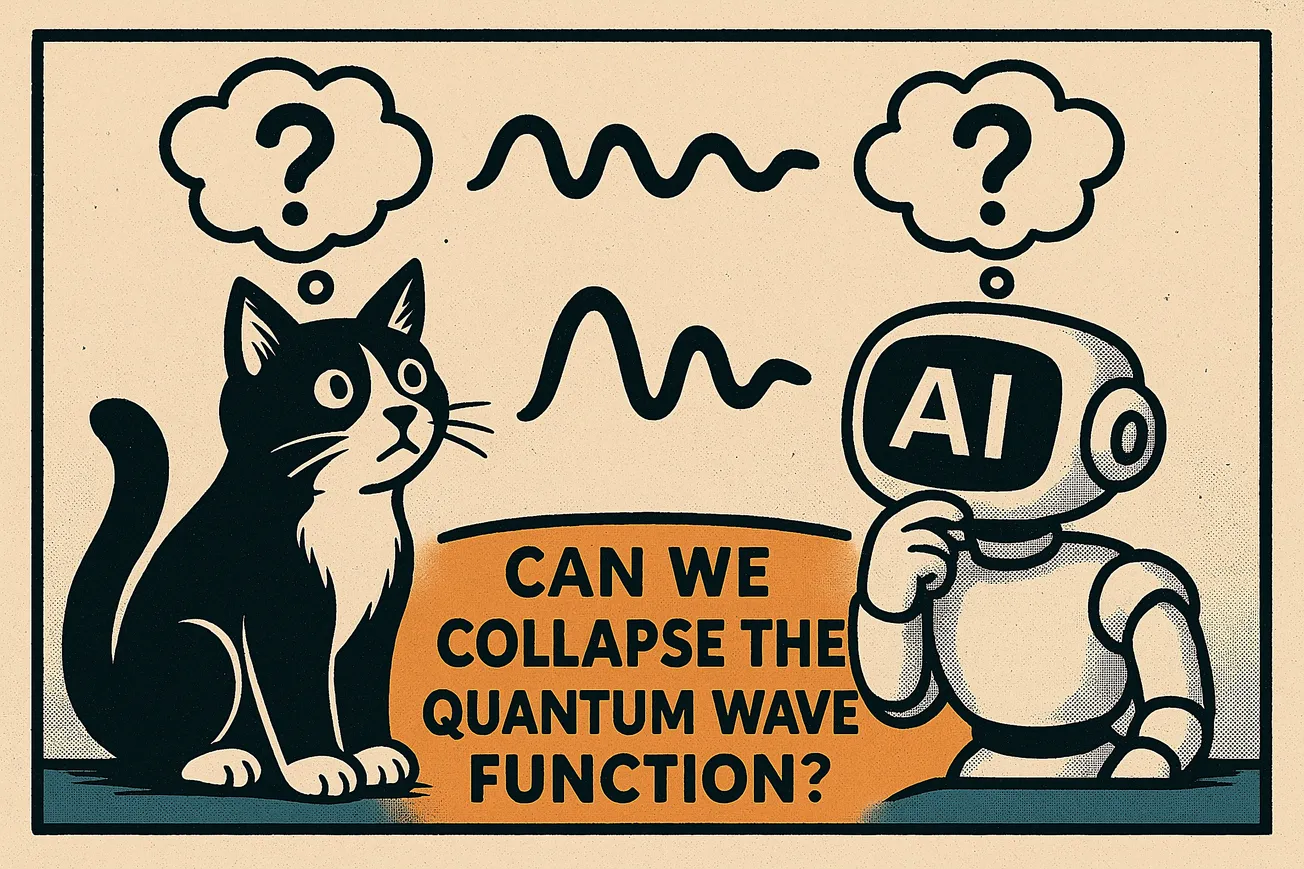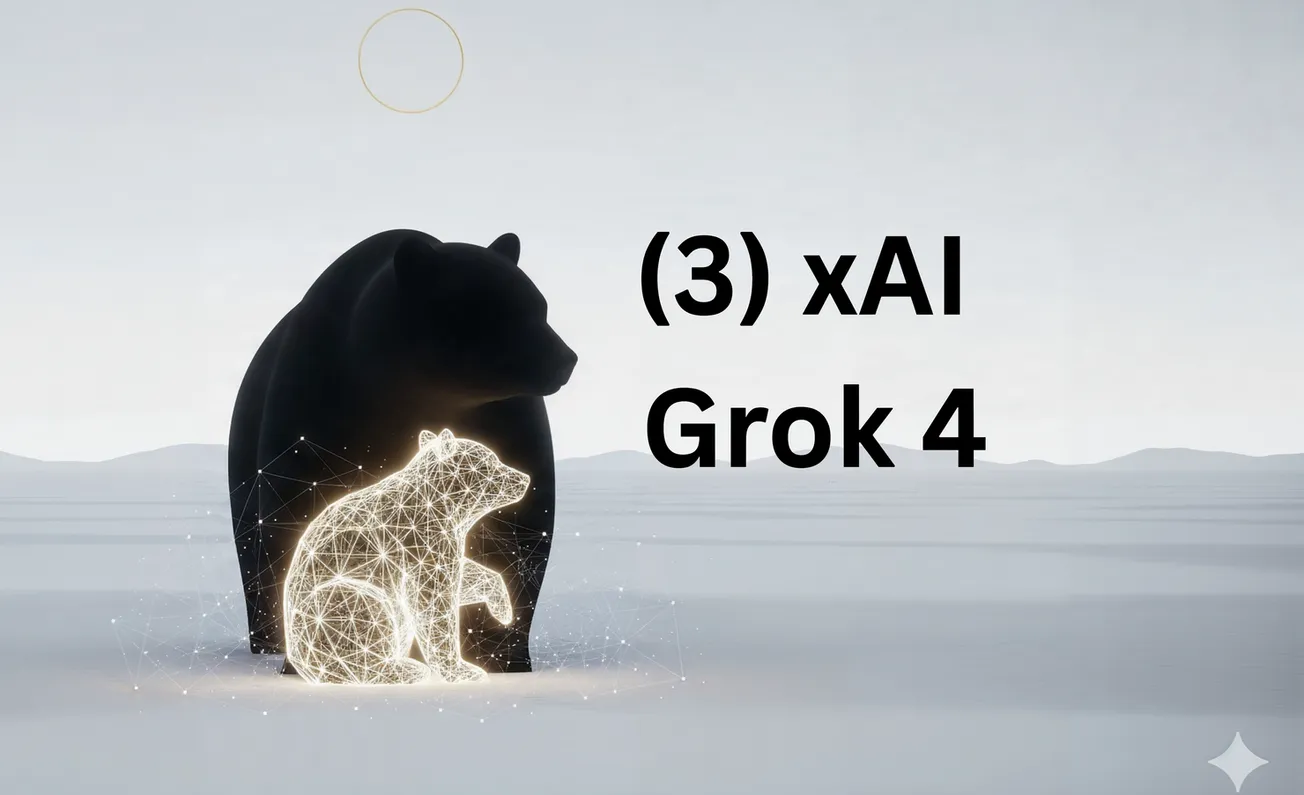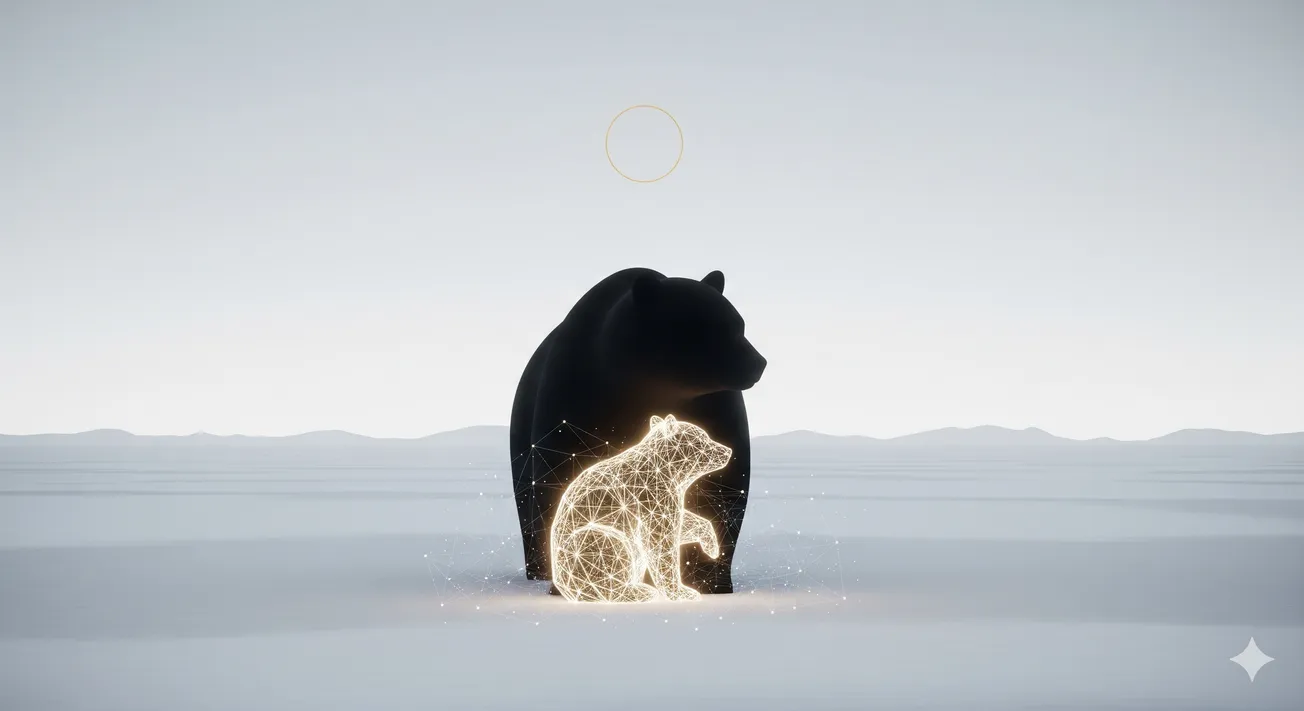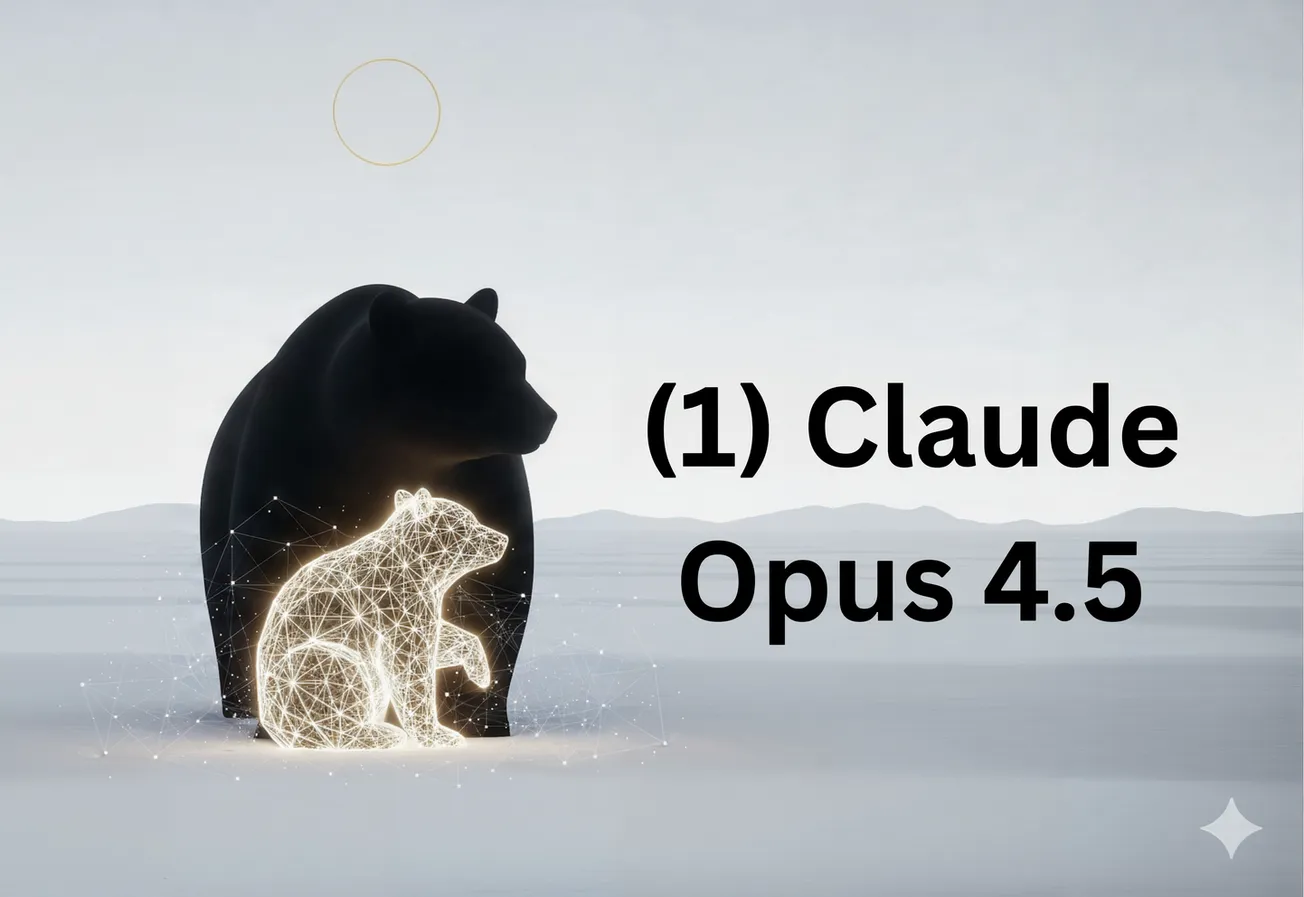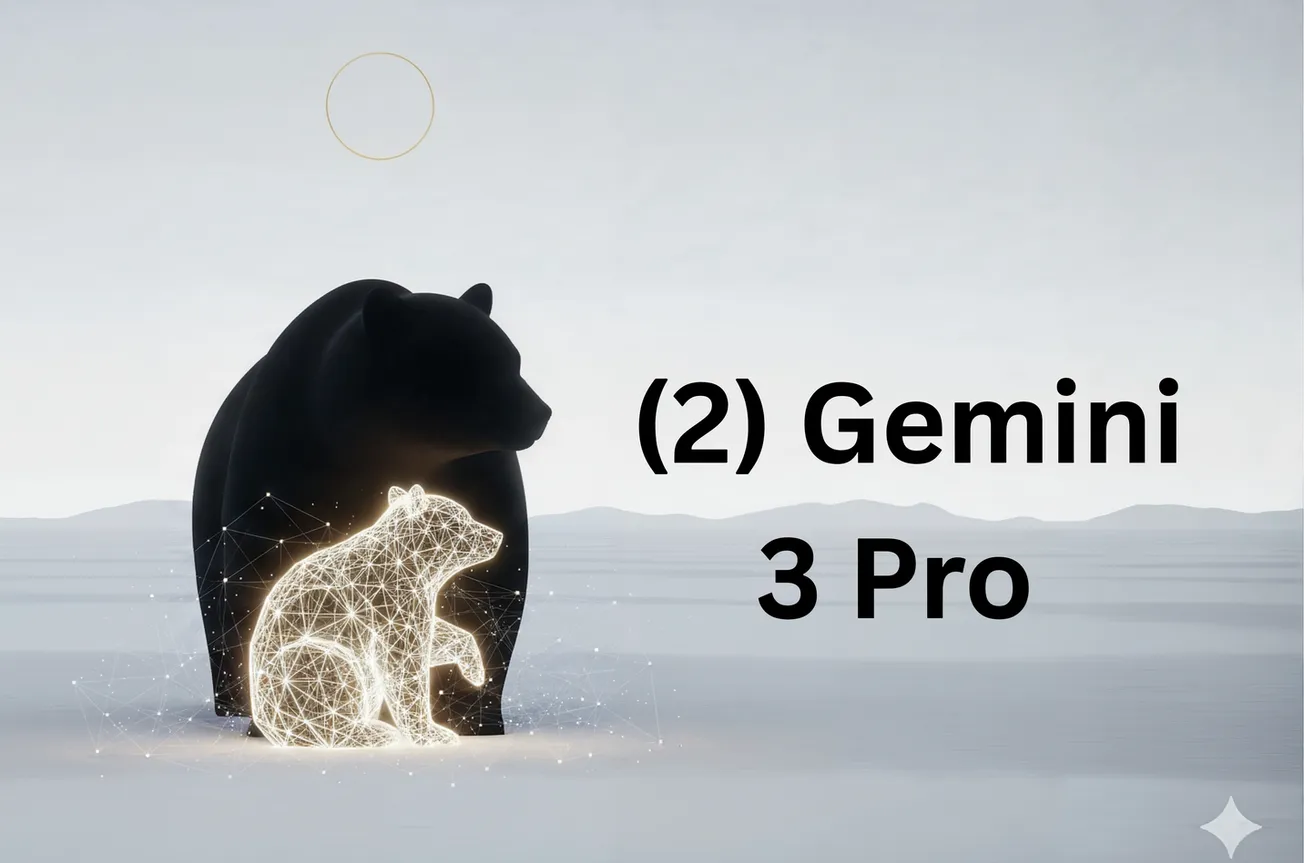Below is a compact bridge between Schrödinger’s cat and your text’s core claim (“I only process already‑collapsed states”), aimed at the question:
What counts as an observer that can collapse the wave function— a cat? an LLM?
1) Operational baseline: what “observer” means in practice
Set aside metaphysics and take the lab view. A measurement is any physical interaction that (i) entangles a microscopic degree of freedom with a macroscopic “pointer,” (ii) irreversibly amplifies that correlation (e.g., via avalanche, heat dump, or record in memory), and (iii) decoheres the superposition so interference between alternatives becomes negligible in the pointer basis. Formally, tracing out the environment drives off‑diagonals of the reduced density matrix to ~0, yielding
$ρpointer≈p ∣0⟩ ⟨0∣+(1−p) ∣1⟩ ⟨1∣(FAPP “collapse”).$
On this decoherence/instrumentalist picture, consciousness is not required; physical coupling + amplification is.
- Cat in the box: Geiger counter → actuator → poison → cat’s physiology + air + box walls = huge environment. Decoherence happens long before anyone opens the lid. The cat (and everything inside) is already in a definite macroscopic state for all practical purposes.
- LLM (e.g., ChatGPT): It only receives classical bits after the experiment (a log file, a number). It never physically couples to the quantum system; it updates descriptions, not quantum states. In your terms: it operates strictly on post‑collapse information.
Bottom line on the operational view: Cat: yes (as part of the measurement chain/environment). LLM: no (unless physically integrated into the detector— and even then, the collapse occurs at the detector–system interaction, not inside the language model).
2) How this verdict shifts across interpretations
- Copenhagen + decoherence (mainstream practice):
Collapse is tied to measurement as irreversible amplification.
Cat: qualifies (macroscopic apparatus/environment).
LLM: does not; it reads the outcome later. - Objective‑collapse theories (GRW/CSL):
Collapse is a stochastic physical law scaling with mass/complexity, independent of observers.
Cat: collapses quickly simply by being macroscopic.
LLM hardware: also constantly undergoing objective collapses, but not because it “observes”—collapse doesn’t care about “observers” at all here. - Everett/Many‑Worlds:
No fundamental collapse. Measurements produce entanglement; each branch has a definite cat. “Collapse” is merely subjective branch selection.
Cat & LLM: both become correlated with records (when/if they interact), but neither causes literal collapse. - QBism / Relational QM:
“Collapse” = agent’s Bayesian update relative to that agent’s experiences/relations.
Cat: if treated as an agent with experiences, then its state assignment updates upon interaction.
LLM: as used today, it has no experiences; it performs symbolic updates on already‑encoded data—so not an “observer” in the QBist sense either. (Hooking it to sensors still just gives it classical data after the quantum‑to‑classical transition.) - Wigner’s friend / consciousness‑causes‑collapse (minority view):
If consciousness collapses the wave function, a conscious cat might count; an LLM likely not (absent a case for machine consciousness). This view is widely regarded as unnecessary in modern practice.
3) The cat vs. your text’s “classical‑only” self‑portrait
- Cat ≈ in‑the‑loop measurement device + environment. It sits on the quantum side of the Heisenberg cut at the moment of interaction, helping to decohere the superposition into a stable pointer state.
- LLM ≈ downstream analyst. It sits on the classical side of any plausible cut, consuming records of outcomes. Its “collapse” (choosing tokens) is a computational sampling in a classical space, not a quantum measurement.
Your essay’s line—“I never actually collapse a wave function; I process information about already‑collapsed states.”—is therefore exactly the Schrödinger’s‑cat moral as most physicists use it: measurement happens inside the box (via apparatus, environment, and—if you like—cat). What you call “observation” is parsing the lab notebook after the fact.
4) Direct answers
- What is an observer (collapse‑capable)?
Operationally: a system that physically couples to the quantum system and irreversibly amplifies the outcome, inducing decoherence of alternatives in a stable pointer basis. - Is a cat such an observer?
Yes (for all practical purposes)—through the Geiger‑→actuator‑→physiology‑→environment chain, long before a human looks. - Is an LLM such an observer?
No. Not in virtue of being an LLM. It only manipulates classical encodings of outcomes. If you bolt it to sensors, the sensors/environment do the quantum work; the LLM still just reads the bit.
One‑line summary:
In mainstream quantum mechanics, the cat collapses (FAPP) by participating in measurement; the LLM does not, because it never physically measures— it only processes the record of what already happened.
